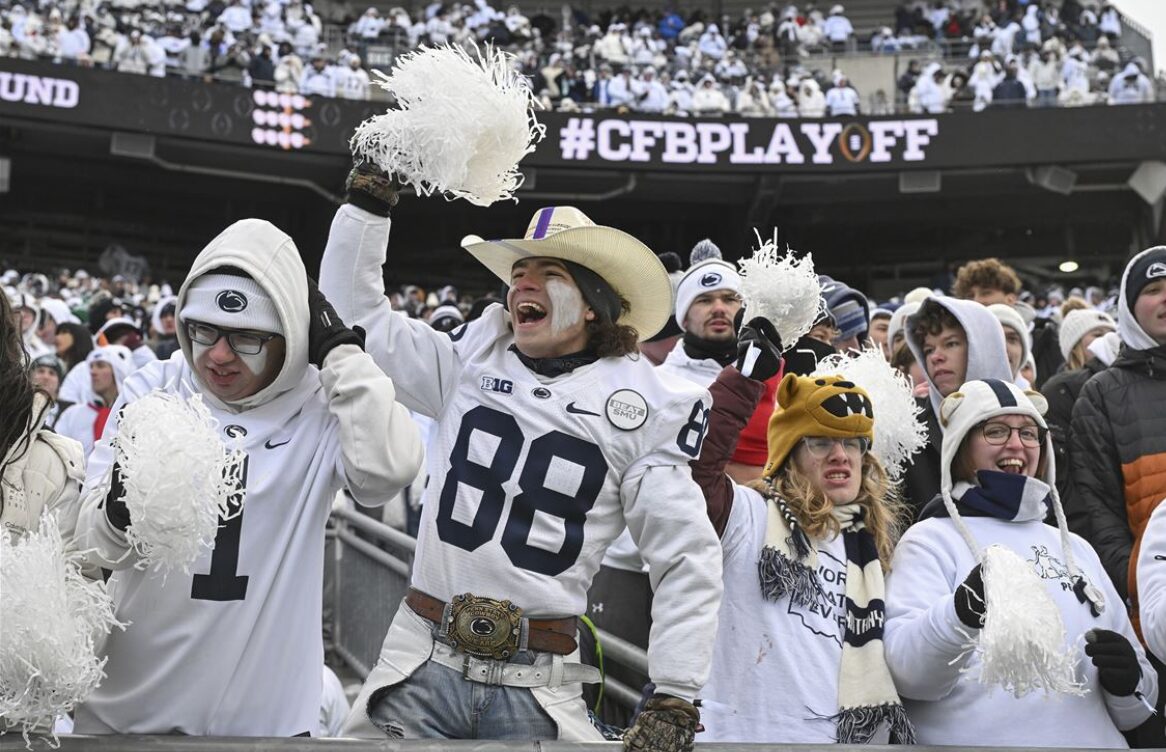Big News For Penn State Nittany Lions
The Nittany Lions are doubling down as Monday’s House v. NCAA settlement hearing looms
UNIVERSITY PARK, Pa. — Located in the vibrant Happy Valley, Penn State is ready to succeed in the changing landscape of college athletics involving name, image, and likeness rights.
With the prospect of direct payments to players now a reality, the Nittany Lions are strengthening their position as they prepare for Monday’s House v. NCAA settlement hearing.
Boasting a large and passionate fanbase along with a history of successful athletic programs, athletic director Pat Kraft and the university are eager to make their mark in this new era of pay-for-play.
However, Penn State’s journey hasn’t always been without challenges.
When NIL was introduced in 2021, the Nittany Lions struggled to keep up with their competitors in adapting to this significant change in college sports. However, a collaborative effort led by university president Neeli Bendapudi, athletic director Pat Kraft, and football coach James Franklin helped shift the momentum.
“The power of Penn State is a tremendous advantage,” Kraft stated in a press conference on February 24. “The fair market value for the starting quarterback at Penn State is quite substantial, and we need to leverage that along with our business partners.”
Kraft expressed confidence that Penn State’s NIL strategy is now aligned with their goals, and the Nittany Lions intend to fully utilize the $ 20.5 million revenue-sharing cap from the House Settlement proposal to continue attracting elite recruits and transfers.
While most of Penn State’s revenue-sharing budget will naturally focus on football, smaller sports are also expected to benefit from increased scholarships and funding.
The wrestling program at Penn State has secured 12 out of the last 14 national titles in the NCAA, establishing one of college athletics’ most impressive dynasties. Currently, Penn State wrestling has just under 10 scholarships, a number that is anticipated to grow due to the NCAA’s new proposed revenue-sharing regulations, according to Kraft.
“I always tell Cael that we will do whatever it takes to provide him with all the resources he needs… I can assure you that we are adding scholarships for him in the future,” Kraft noted.
Without a standard approach, each university must develop its own strategy.
Some institutions may struggle to reach the $ 20.5 million cap due to funding limitations. Regardless, the financial picture isn’t straightforward, even as the Nittany Lions plan to fully utilize their new NIL resources.
“We don’t have an extra 20millioneveryyearinourathleticdepartment.Sowherewillthat 20 million come from? That’s going to be the key question,” remarked Jay Paterno, son of the legendary Penn State football coach Joe Paterno and a member of the university’s board of trustees.
Matt Brown, founder and publisher of the Extra Points newsletter, which focuses on business and policy issues in college sports, anticipates a fundraising surge to help many of the NCAA’s 365 Division I schools make up the difference.
“There will be efforts to create revenue streams that would have seemed unimaginable to Penn State fans just 15 years ago — like selling naming rights for the field,” he told the Post-Gazette.
Once the funds are obtained, the next challenge is figuring out how to distribute them.
“Clearly, football is the main driver, and I would be surprised if they allocate less than 11million− 12 million just for the football program. … A dollar in wrestling might have more impact than $ 2 million in men’s basketball,” Brown explained.
Paterno, who co-founded the Success With Honor NIL collective, noted that many coaches will have control over how this new funding is distributed. A great deal of financial creativity and strategy will also be required, especially as House vs. NCAA aims to eliminate scholarships, introduce roster limits, and pay out $ 2.78 billion in back pay to athletes over the next decade.
“Your coach will receive a pool of funds. ‘Here’s cash that you can allocate to your program. You can designate it for scholarships, revenue sharing, or whatever else. But this is the total amount available,’” Paterno explained to the Post-Gazette.
Some universities might choose to cut certain sports to concentrate on those that have been more successful in terms of championships. While Penn State is expected to retain all 31 varsity programs, some may not receive additional funding beyond their current scholarship allocations.
“I wouldn’t be surprised if the [Penn State] baseball budget was $ 0, even though some Big Ten schools will have baseball budgets in the seven figures. They will still cover the scholarships, but any additional funding will need to come from marketing deals that players secure themselves,” Brown stated.
To manage this complex financial landscape, Penn State may join a growing national trend by hiring a general manager or a similar position, akin to what is standard in professional sports organizations.
“Regardless of what you call it, you’ll need an accountant in that role. It’s important to know how much money you’ve spent and how much is left to distribute,” Paterno said. “Whether you label it chief financial officer, GM, or something else, that role is essential.”
However, the increased focus on fundraising to remain competitive may detract from the fan experience.
Universities like Tennessee and Texas have already introduced extra taxes on football tickets to fund player payments.
For Penn State, the path to success is evident, but it comes with challenging choices and significant financial commitments ahead.
“In the current landscape, Penn State is choosing to fully engage,” said John Affleck, head of the university’s journalism department and director of the John Curley Center for Sports Journalism.
“This could result in a more transactional atmosphere, potentially making the experience less emotionally intense.”



No Comment! Be the first one.